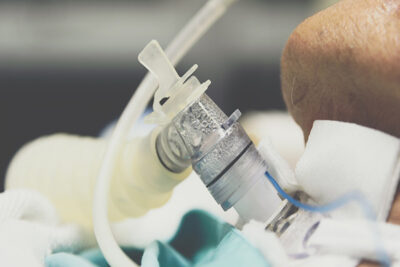
Novel Bedside Procedure Improves Tracheostomy Outcomes
By Jonathan Springston, Editor, Relias Media
Emergency nurses in a New York ICU cut the number of medical device-related pressure injuries (MDRPIs) following a tracheostomy to zero for four years using the percutaneous dilation technique (PDT).
A tracheostomy is a common life-saving procedure whereby a clinician makes an artificial opening in the trachea and places a cannula. However, this can lead to an MDRPI, a pressure injury caused by device-related friction on skin. These injuries are common, occurring more often in ICUs.
In the 18-bed adult ICU at NewYork-Presbyterian (NYP) Westchester in Bronxville, two nurses turned to the Agency for Healthcare Research and Quality Preventing Pressure Injuries Toolkit to devise a way to improve tracheostomy outcomes. They decided to try PDT, which the authors described as “a fenestrated polyurethane foam dressing … sutured in place under the tracheostomy flange during insertion to reduce the risk of [MDRPIs]. The sutures were removed in pairs over a period of seven to 10 days,” with nurses examining the site at least every 12 hours during this period.
In 2018, the incidence of healthcare-associated pressure injuries (HAPIs) was 1.39% for all ICU patients, with tracheostomy MDRPIs accounting for 0.19% (15 HAPIs, including two MDRPIs, among 1,077 patients). Over the next four years, clinicians performed 22 PDT tracheostomies in the ICU. There were zero MDRPIs.
Although limited by a small sample size and the fact all tracheostomy procedures performed were planned, the authors reported the success of their initiative led to practice changes across the NYP network.
“These findings depend on the engagement of all related specialties, nursing education, and an [emergency medical record] to recover data. Although some process modifications may be necessary, the protective elements of the polyurethane foam dressing may benefit other patient populations as well, including pediatric, neonatal, and surgical,” the authors concluded. “Overall, the results of this project add to the existing evidence that prevention of tracheostomy MDRPI is a viable strategy for improving patient outcomes.”
For more on this and related subjects, be sure to read Critical Care Alert, Emergency Medicine Reports, and Trauma Reports.
